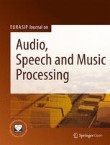Sparse pursuit and dictionary learning for blind source separation in polyphonic music recordings
We propose an algorithm for the blind separation of single-channel audio signals. It is based on a parametric model that describes the spectral properties of the sounds of musical instruments independently of ...
